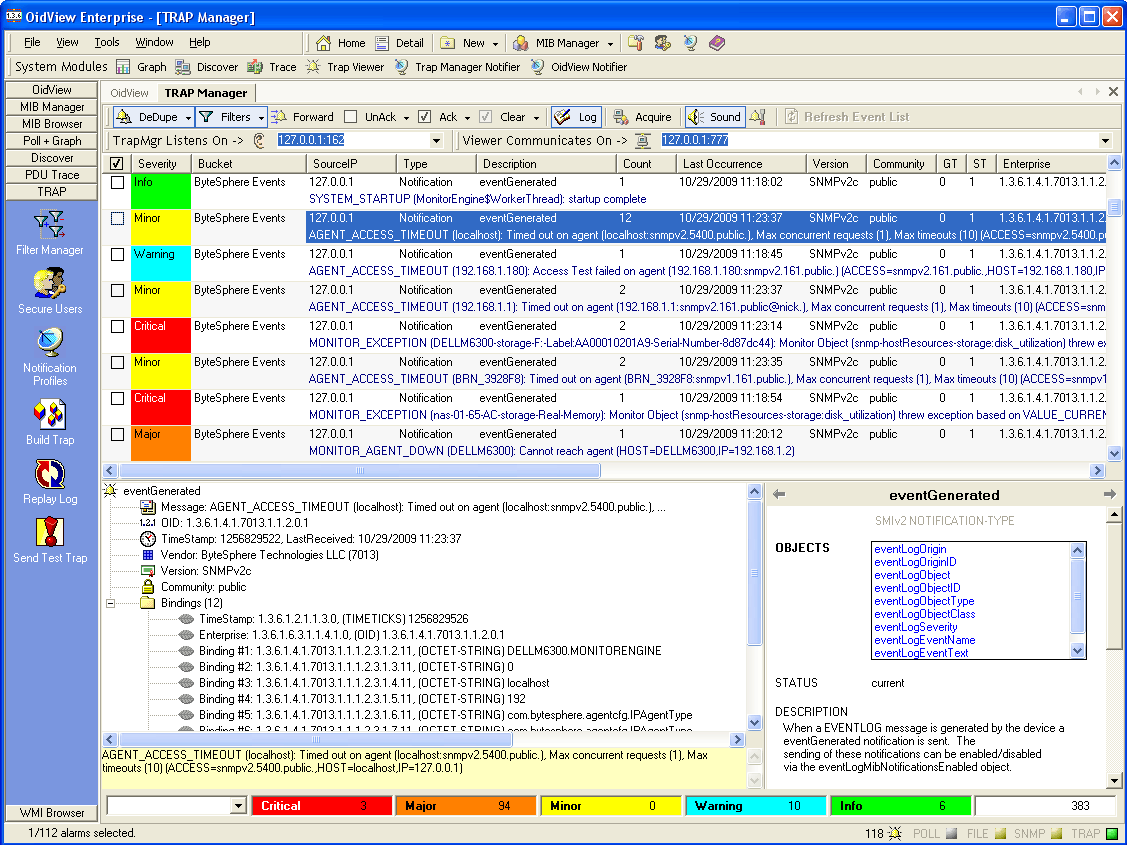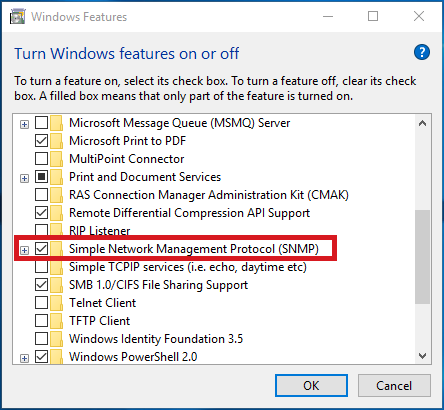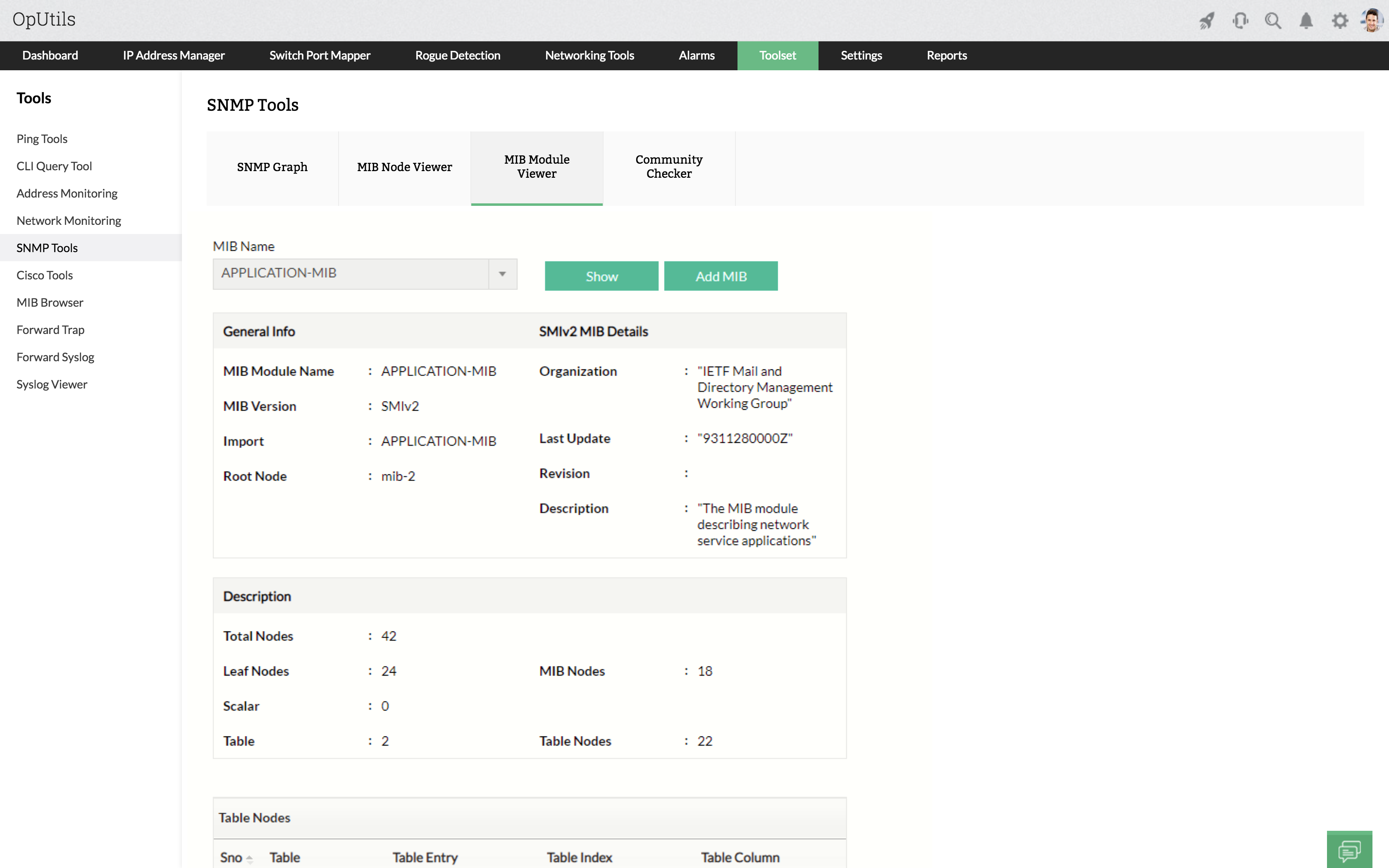

Under Analysis of Test Results, click Enable to configure ipMonitor to examine the variable bindings of the incoming trap. In this example, if the agent IP address is within the trap monitor's allowable range, all Enterprise OIDs sent by an SNMP agents are evaluated.Ĭlick Get Info to query the SNMP database for details regarding the specified Enterprise OID. To specify an OID Prefix, use an asterisk. The specific-trap field identifies the particular trap that occurred.Įnter the Enterprise OID that identifies the network management subsystem that generated the SNMP trap. The sending protocol entity recognizes that some enterprise-specific event occurred. The sending protocol entity is the addressee of a protocol message that is not properly authenticated.Īn EGP neighbor for whom the sending protocol entity was an EGP peer is marked down, and the peer relationship no longer exists. The sending protocol entity recognizes that one of the communication links represented in the agent's configuration is now up.

The sending protocol entity recognizes a failure in one of the communication links represented in the agent's configuration. The sending protocol entity is reinitializing itself so the agent configuration or the protocol entity implementation is not altered. The sending protocol entity is reinitializing itself so the agent's configuration or protocol entity implementation can be altered. Leave this checkbox blank to use the IP address specified in the IP header.Ĭlick the Generic Type drop-down menu and select an option. Select the checkbox to use the IP address specified by the agent in the incoming trap packet to validate the IP address range.To enter a single IP address, enter the same start and end IP address in both fields. To enter a range, enter the start and end IP address range that the SNMP traps will accept. Under Allowed IP Address Range, enter an IP address range or a single IP address. This can improve the SNMP security model, often in conjunction with a non-standard SNMP port. Some SNMP agents allow you to use non-default community strings. If both ipMonitor and the agent use this same read-only string, ipMonitor continues its trap filtering and moves to the IP Range test. When ipMonitor receives a trap from an agent, it includes the SNMP Community string. The SNMP Community string acts like an SNMP password. Click the SNMP Version drop-down menu and select the version of the incoming SNMP trap.Įnter a community string, such a private (read-write) or public (read-only).Under Trap Filtering, enter information about the SNMP trap. You can disable the monitor later if required. When enabled, the monitor tests the specified resource using the settings you enter under Test Parameters. ipMonitor does not use this field to internally identify this monitor. You can change this name later, if necessary. This name will appear in the monitor list, monitor status, log files, and your reports. Under Identification, enter information about the monitor.Įnter a name in the Monitor Name field using up to 64 characters. In the Select Monitor menu, click SNMP Trap.In the toolbar, click Add > Add New Monitor.

#Windows snmp trap receiver software#
Integrate ipMonitor into any existing network management software in your organization.The alert supports ipMonitor alert tokens, as well as enterprise-specific and generic trap types such as Cold Start, Warm Start, Link Down, and so on. The SNMP Trap alert sends an SNMP trap to any SNMP management application. Its function is to send the alert text to an SNMP manager where it is analyzed by string pattern matching rules, and then reported and recorded by your existing network management software. The SNMP Trap alert sends an SNMP trap to the specified SNMP manager.


 0 kommentar(er)
0 kommentar(er)
